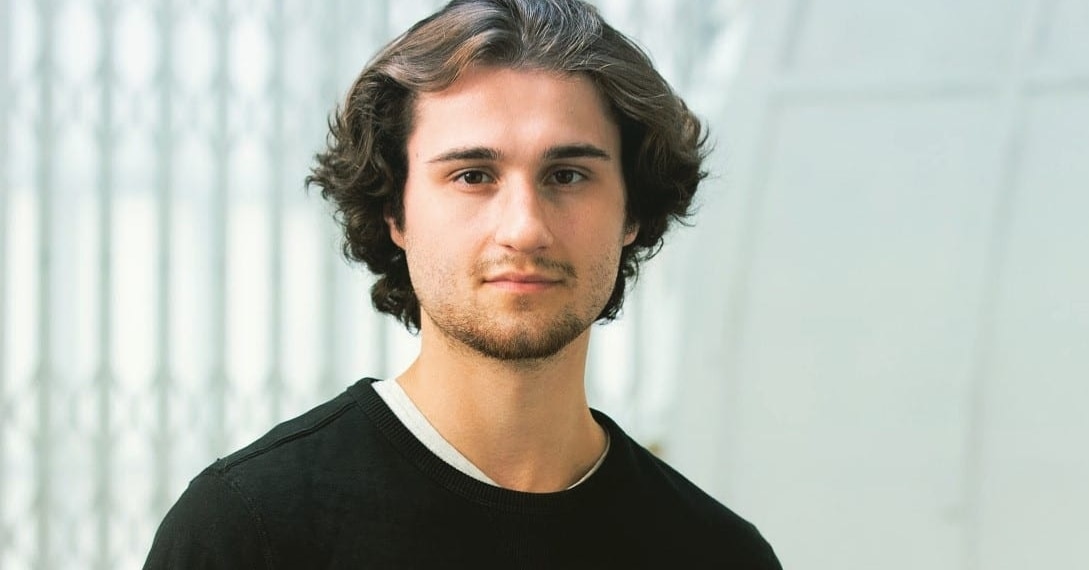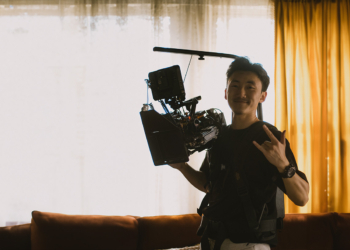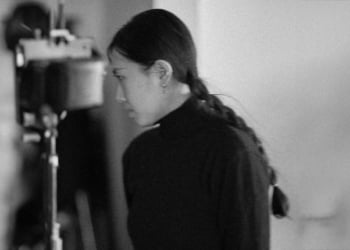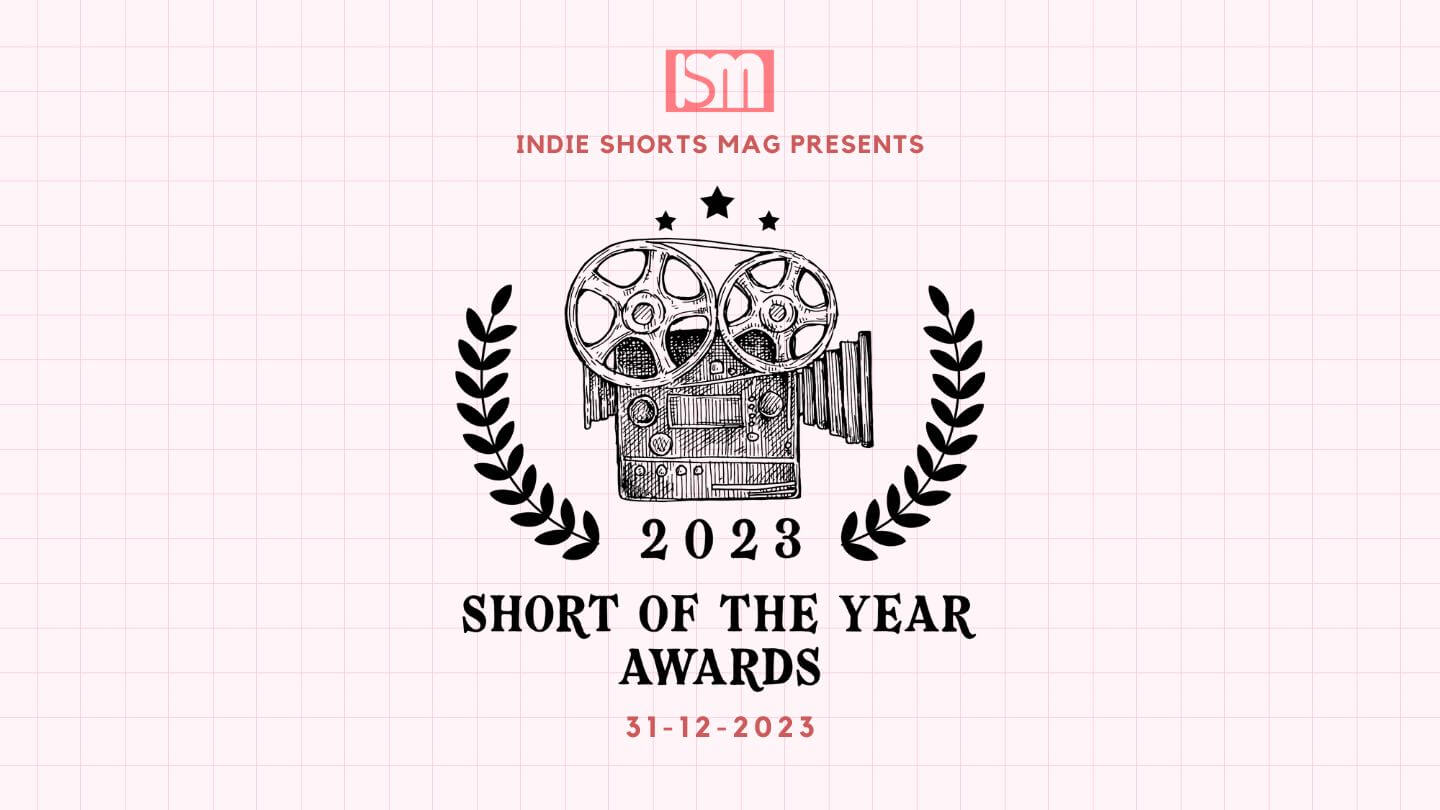Young, Young Men — a film about teenage male friendship — is a breath of fresh air. It is intimate, warm, and entirely devoid of malice. Here we have a conversation with its filmmaker Noah Stratton-Twine touching everything from British coming-of-age stories, his influences, to the respect and attention he paid to his two characters.
- Young, Young Men is set in a beautiful countryside location (South-English prairie). What did you hope to weave into the film by setting it where you did?
Without sounding overtly cliché, the setting was always the main character of the movie. My ignition in making the film was to establish an environment recognisable to the youth of Britain, but new to the big (or small) screen. I noticed a lot of British coming-of-age films plunked their characters into gritty concrete jungles that accentuated their angst and adolescent grievances. Not to negate those cultures, but that just wasn’t how I, or the crew, grew up. That was the seed.
- That’s interesting, Noah. So, what really were your thoughts when you went to recce the location?
Originally we were going to shoot somewhere that looked more cinematic. Tall pine trees and extraordinary vistas. It was a month until shooting when I flipped that plan on its head and decided to instead shoot in my hometown. So now the scenes based on true events were actually shot where they happened. Rather cathartic, but to the cast and crew, it was essential in connecting to the context of the film.
- Moving from its location to cast; Young, Young Men has a distinct cast: Millennials. What prompted you to choose kids from the millennial generation as your characters?
Because they’re like me! The thing I found interesting about my generation is that we grew alongside the great technological boom after the first iPhone released in 2007. Social media was developing slowly, but it wasn’t really a focus like it is now. Phones were present, but going outside and engaging with friends in fields and forests always took precedence.
I wanted to create a modern film that could get away with not using social media as a thematic plot point. It’s difficult to make modern coming-of-age films right now that don’t feature phones and social connections as a narrative device because of how integrated they are in the lives of young people. I didn’t want Luke and Charlie to take a selfie, nor be cyberbullied. The film wasn’t about that. There’s one scene where Charlie watches a video of a bunch of students at a pre-party event, but we only hear the audio of it. If we saw what they saw, it would just open up another dimension.
Also, British millennials are lacklustre in films. I wanted to make something that the same generation would recognise, whilst being a slice-of-life insight to older generations that kids like these existed.
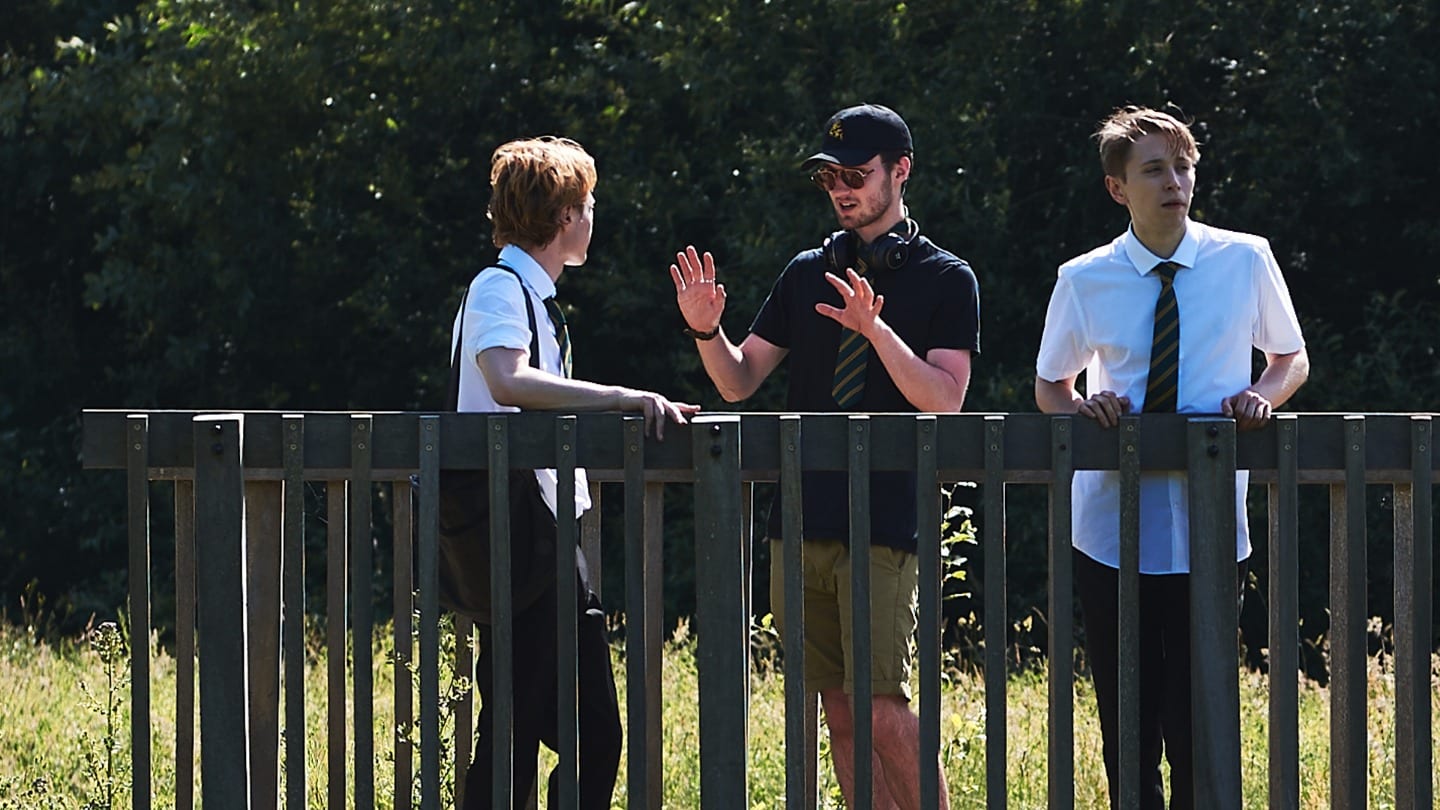
- You certainly succeeded at that. Take us through its scripting stages. How did you develop Luke and Charlie on paper?
It was an odd one. On one hand, I was merely acting as a linguistic conduit for the language I remember from my time in their shoes. For example, getting the game “odds on” in there was so important because that’s all we did. That was how decisions were made, and to be frank, are still made. On the other hand, this is a movie. It needs to move somewhere, and a few blast-from-the-past idioms and axioms couldn’t give the film a narrative direction.
I didn’t overcomplicate the conception of Luke and Charlie. I think they’re quite like other cinematic buddies; different but the same, independent in will, but magnetic in connection. Luke is a little restrained, Charlie is more-so chaotic. These are really simple attributes, but having them so straightforward meant their characters could be moulded in the moment, instead of being already moulded in an already-conceived backstory. From there, it was all about how they would interpret situations both independently and with each other. For example, Luke getting better grades than Charlie. It’s an unspoken thing, but it’s there lingering in every scene.
- The characters certainly share believable chemistry. How did you direct the actors to be quite so platonically intimate? How much of it was already on the paper?
Well, it helped that John and Ned already knew each other, which was strange at the time, because I cast them through different methods and at different times. Naturally, boys of that age pinch, punch and slap each other for fun. It’s a form of communication like any other. They bounce off each other verbally and mentally.
When we were rehearsing, I spoke to them about how they would touch each other without even clocking onto it. I think that lack of reaction from both characters cloaked the intimacy, gradually becoming something the audience would just get used to. For example — in the opening scene, neither character speaks to each other, but their playful contact tells us all we need to know. However, when they hug after their argument, there is an air of awkwardness because of how present they are physically in that moment. It’s the difference between a good handshake and a failed one — if it goes well, you don’t even think about it, but if you go in for a shake and they go for a fist-bump, it’s all you can think about.
Aside from the montage sequence, pretty much every touch, slap or punch was scripted. It’s a credit to John and Ned for making them feel so authentic.
- It’s interesting that you say that the characters and their dynamics were already established on the paper. So, how many revisions did the film or the screenplay go through to be the final product?
The first (very poor) draft of the screenplay was written five years ago, which went on to receive procedural updates and reworks as I matured both in life and in the craft. Despite this, the general gist of the story never changed — it was always just two boys walking and talking amidst the South-English prairie.
Originally, the film ended with Luke and Charlie attending a party in its prime. After Charlie throws up, the pair are drawn further into the forest by distant subwoofers, eventually arriving at a field with two dozen partying students. They delivered the “What you drinking?” exchange and walked into the ethereal light. Super cinematic. I rewrote that ending in favour of giving the boys one last moment alone together. The previous ending made it feel like they won, that the party was all that really mattered. No. It was always about the journey, so having them arrive at this partly-mythologised party and being the only ones there just felt like the ending they deserved. I did favour a few fellow teenagers to eventually show up, but that was only to establish that all across this countryside, people are having their own unique exodus that was just as important and just as special — just like Luke and Charlie.
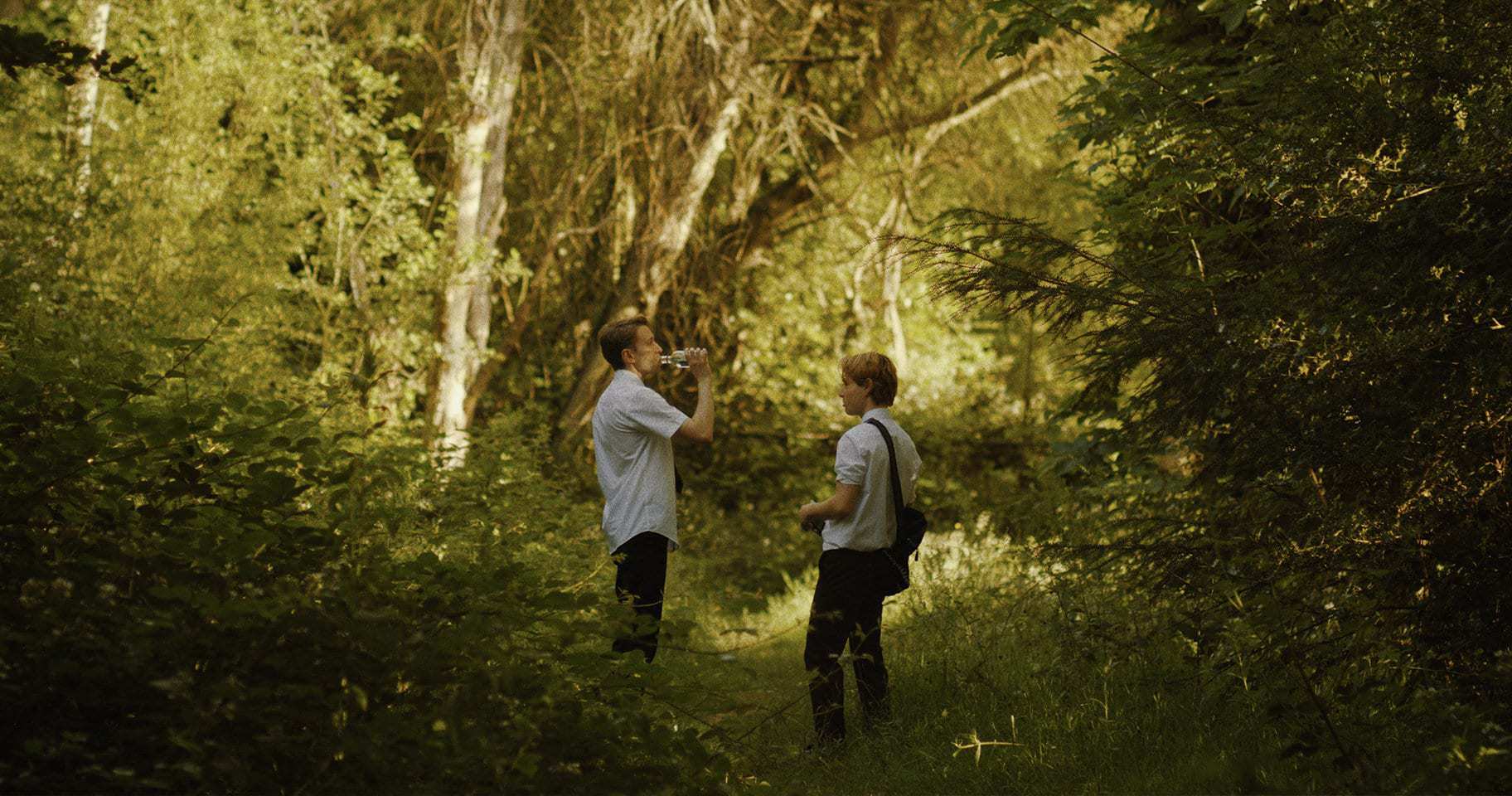
- Since you mentioned its super cinematic ending; the ending being what it is, did you envision what the future looks like for the two characters and their friendship?
Their futures never mattered to me. I wanted to focus on the moment — this one afternoon. Anything could’ve happened to them after that, just like anything could’ve happened to all those school friends that we lose contact with.
I like to think Charlie and Luke had a great night at the party, and hopefully, they stayed friends long into the future. Though based on my experience, they likely didn’t, and that’s fine. They had one great summer together and they’ll remember it forever.
- Of the film’s look, how much of it was directly your decision, and how much did you rely on cinematographer Toby Hart?
The film came out exactly how I envisioned, if not better. Toby and I didn’t talk much about the specifics of what we wanted as we simply didn’t need to. Toby grew up like I did, and that was enough direction to get what we wanted. I wrote a shot list but, per usual, didn’t really use it. A lot of the times we just plonked the camera down and went with it. Despite a few reflectors here and there, we were shooting entirely in natural light, so there was an abundance of freedom.
I had two technical requirements. The first was using lenses capable of going to extremely low apertures. This was to create this dazzling green mirage in our close-ups that accentuated the boys amidst the foliage. Also, I just prefer to shoot on low apertures whenever possible. I just like the way it looks.
The second was using zoom lenses in order to capture the boys traipsing across the countryside in a voyeuristic, almost documentarian style. I would direct John and Ned to walk and not stop walking whilst playing off each other, and we just shot them moving further and further away from us, usually for quite a long time.
We shot LOG, a video format that produces a very flat and unsaturated image. Shooting this way gives a lot of freedom in the colour suite, so a lot of the “look” came from the grade. I made the decision to push the saturation just beyond the normal value to give the visuals a nostalgic dream-like quality. The term “golden summers” was thrown around, and I used it as a basis to create a look that felt like experiencing a memory.
- It was voyeuristic, indeed. Coming to its background score. You were involved in composing the score, how did you go about creating something that would not only fit the mood, but also deliver the story in its own electric way?
I essentially composed a handful of various themes until I heard something that reminded me of childhood. I eventually played something accidentally nostalgic and just stuck with it. The initial motif dates back 12 months before we shot anything. Though, this was just a rough melody. The percussive claps were envisioned from the beginning as a human element to intertwine with the piano. They also created an unmissable energy, similar to that of the boys.
The more orchestral components were decided in the editing suite. We were close to going electronic, but seeing as the film’s set just before the big tech boom, it felt more authentic to use bombastic brass and woodwinds to give the film an adventurous quality.
I fought hard to get a pedal steel guitar as the primary instrument of the film. It has a bleeding melancholic sound I thought perfect for the picture. Sadly, we didn’t have the budget for it. That irks me to this day.
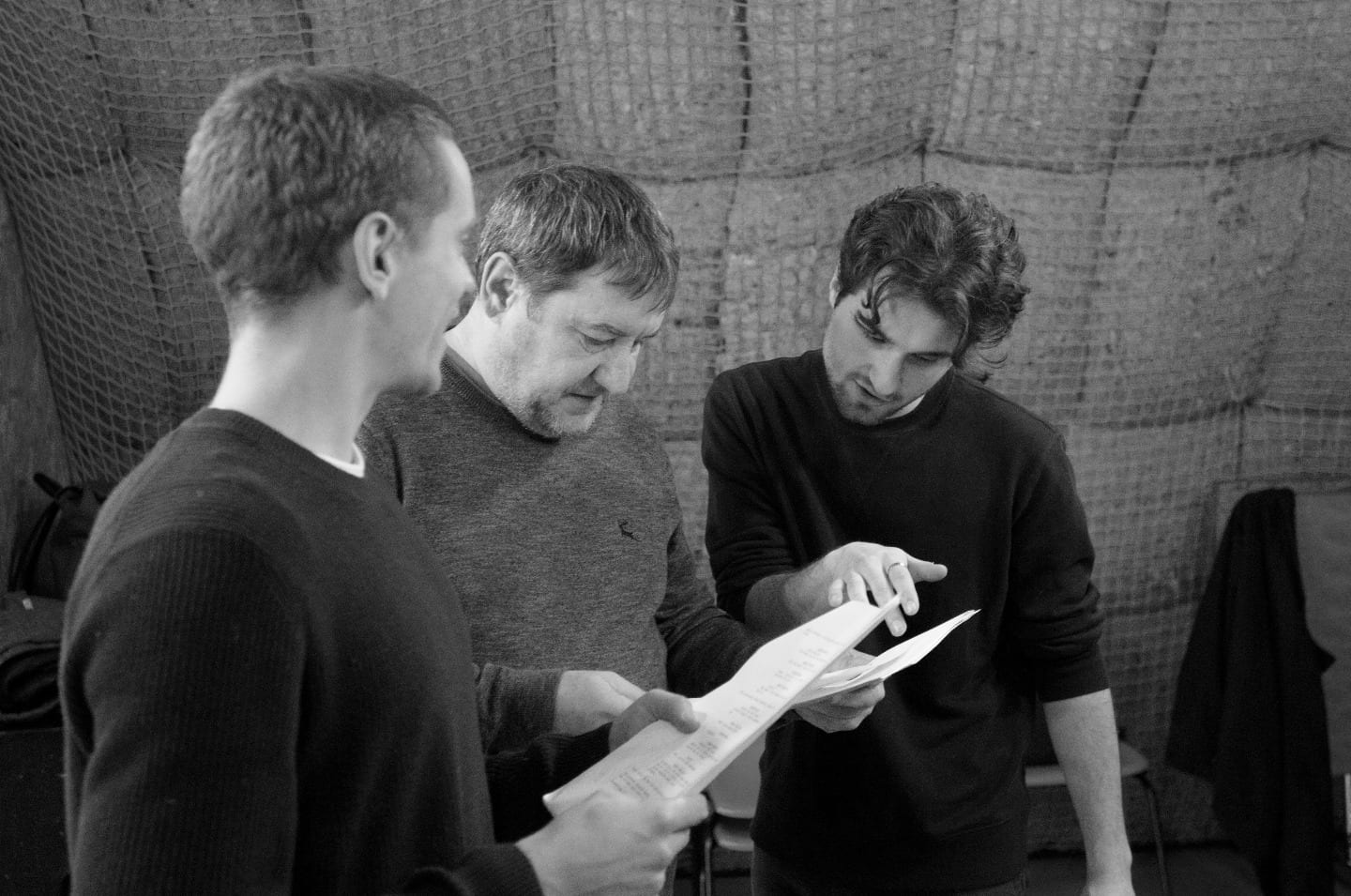
- 12 months is a long time investment. What did collaborating with Conor Lane (composer) feel like? Especially when you have single-handedly written, directed and edited the film?
Half of the post-production on my movies are spent with Conor, so it all feels very natural. He not only operates boom but also works with me on sound design, so composition fits nicely in that arrangement. After we finish sound design, I hand over a bunch of sporadic melodies and motifs. He re-transcribes them into his workstation. We lock the door, put the speakers up and brainstorm for days or weeks at a time, experimenting with everything that comes to mind. Making music is a lot simpler these days, so I can simply say “let’s try a woodwind tremolo there,” and within 10 seconds, it’s there.
Often, the score became a slave to the edit, or vice versa. Ideas we put into the music justified a response in the cut, thus new shots were added or original shots were extended or shortened. The montage sequence didn’t really exist until we had a score that fit it, and even then, the score influenced exactly what came up on the screen and at what time. Essentially an always adapting imperfect marriage between visual and sound.
A flaw of our collaborations is we both believe our work is never finished, leading to us returning to the score over and over again months apart. We try new things despite being already satisfied, usually because we get bored and want to hear something else. The score went through around four major revisions before we had to throw our hands up and say no more.
- It’s hard for you to let go, isn’t it? In that case, was there a particular element that did not change at all throughout?
A lot of the movie was forged in the edit. For example, the montage sequence was never scripted nor planned. I wanted the opening to have a strong musical moment, and it just made sense with all the B-roll footage we shot. A handful of lines were cut too, usually from the beginning or end of a scene. I find it easier cutting a long scene short than attempting to make a short scene longer.
The film was also originally titled Viaduct Country with Young, Young Men in subheadings. I grew to love the latter name a lot, thus made it the main and only title.
- What conflicts or difficulties, if any, do you face in switching from the role of a director to that of an editor?
Honestly, none. I see the edit as clear as day when I’m writing and directing the film. Every cut, every fade to black, every superimposed title card. Obviously new ideas appear in the edit, but when I direct, I’m really just filling in the blanks of an imaginary editing timeline in my head. It’s one of those things that’s hard to describe, but it works for me.
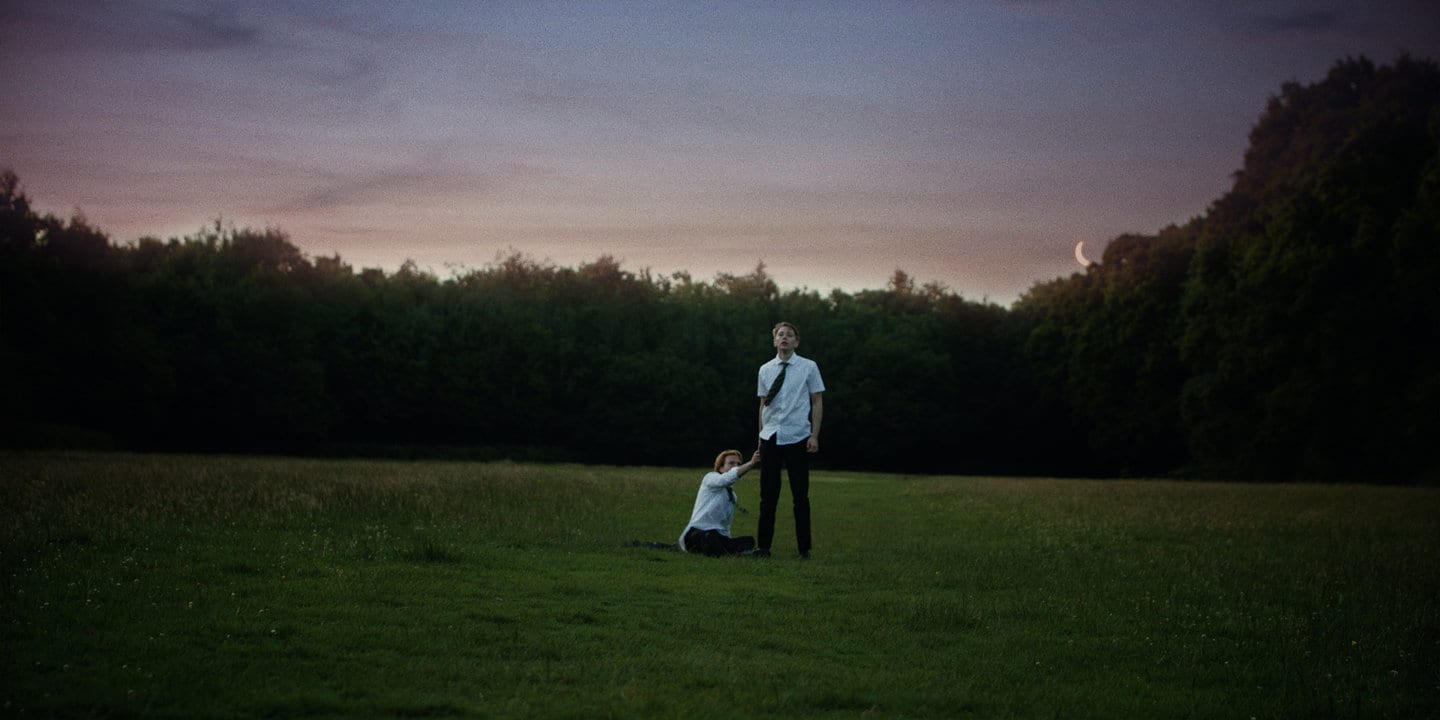
- Going back to Young Young Men‘s characters; the gender and sexual dynamics in it are refreshingly respectful. What motivated these decisions and at which stage of writing or production did they begin and then fully develop for you?
I think it’s easy to paint adolescents as these crass-speaking delinquents, because truthfully, a lot of them are like that. However, the fact they were young men warranted at least some conversation about chasing the girls, but I think those conversations were just talking points to distract from their insecurities concerning the world around them. At no point in any version of the script did they come into contact with the opposite sex, and I think the one time they do being from far in the distance speaks volumes about what I’m trying to get across. Luke and Charlie have no conquest, just vague aspirations. They drink because it’s fun. They talk about girls because other people do. There’s no agenda. It’s all just cluelessness, and I think that’s what makes it endearing.
- We have to ask you this: Were there any literary works or films that influenced any aspects of Young, Young Men, whether that is its mood or premise or characters?
I love movies. I watch a couple every day, so there’s probably an extensive amount of subliminal influences from every film I’ve ever loved in there. Yet I made an effort not to watch many coming-of-age films before shooting. I didn’t want to rely on past successes and formulae, especially as I was depicting such a personal setting to me.
There’s a montage sequence in David Lowery’s Ain’t These Bodies Saints which became a huge inspiration for the montage, specifically with the percussive claps. Although it may be hard to see, I took inspiration from the ending of Jeff Nichols’ Mud for my ending. Although that film ends on a boat in a bayou and Young, Young Men ends in a field, the mood in Mud’s coda encapsulated the exact feeling I desired. It was deliciously melancholic and had a tangible taste of anticipation of what’s to come after we cut to black. I think we even used the soundtrack as a temporary score early on in post-production.
- This has been a great interview! Unfortunately, like all things good, this has to end too. On a closing note, what’s keeping Noah busy these days?
I was set to begin shooting my next film last March, so you can imagine what happened with that! We shut down production on the first day of principal photography, which sucked. That’s been rescheduled for next year, however, I’m working on a new short right now, looking to shoot sometime in October. Similar to Young, Young Men, it’s a slice-of-life movie with two eccentric characters in a defining moment, but set entirely in a Parisian restaurant. It’s called Blue Ruby. I’m really excited for it.
I’m also in the very early development of a feature film I intend to shoot sometime in the next 3 to 4 years. It’s a homage to the Zemeckis-era of filmmaking, set in the South-English suburbs. It’s about one man’s devotion to his grandma. Features are tricky things, but it’s never been more accessible to make one, so I’m going to give it my best shot.
A short film Blue Ruby, and an untitled feature film and lots of indulgence in cinema viewing amongst others, Noah Stratton-Twine has his hands full. His evocative Young Young Men is sure to be taken note of. We look forward to him regaling us with many more similar or dissimilar projects, but regardless, with a very Noah-like tone to them.
To know more about Noah and his work, click here.


